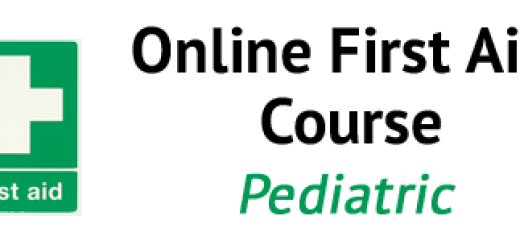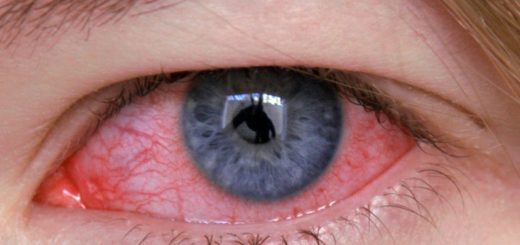First Aid For Altitude Sickness: 9 Effective Relief Tips
Have you ever dreamed of reaching the top of a mountain? Although the views are amazing, there’s a challenge – altitude sickness. It can make you feel awful, ruining your whole trip.
In this article, we’ll explain altitude sickness and how to avoid it. We will also cover first aid for altitude sickness and when to seek medical help. Keep reading!
Understanding Altitude Sickness
At sea level, the air we breathe is roughly 21% oxygen. This precious gas is vital for our cells to function properly, generate energy, and keep our organs running smoothly. As we climb, the air pressure decreases, reducing the total amount of oxygen in each breath we take.
So, what happens when you’re suddenly faced with this oxygen deprivation? Your body tries to compensate in various ways. Here’s how:
Increased heart rate and breathing: Your body tries to take in more air with each breath and circulate it faster to deliver oxygen to your cells.
Thickening of blood: This helps carry more oxygen molecules per red blood cell.
Production of more red blood cells: This is a long-term adaptation that takes days to weeks.
This process of adjusting to the lower oxygen levels is called acclimatization. However, if you ascend too rapidly, your body might not have enough time to adapt effectively. This is when altitude sickness arrives.
Altitude sickness can occur in a variety of ways, depending on the severity and individual’s vulnerability. Some of the common symptoms:
- Mild Symptoms (Acute Mountain Sickness- AMS): This is the most common form and usually occurs within 6-24 hours of reaching high altitude. Symptoms include headache, nausea, fatigue, dizziness, loss of appetite, trouble sleeping, and shortness of breath during exertion.
- Moderate Symptoms (High-Altitude Pulmonary Edema—HAPE): This is a more serious condition in which fluid accumulates in the lungs, causing shortness of breath at rest, a dry cough, and pink or bloody sputum.
- Severe Symptoms (High-Altitude Cerebral Edema – HACE): This is a life-threatening condition where fluid builds up in the brain, leading to confusion, disorientation, loss of coordination, hallucinations, and eventually coma.
Preventing Altitude Sickness
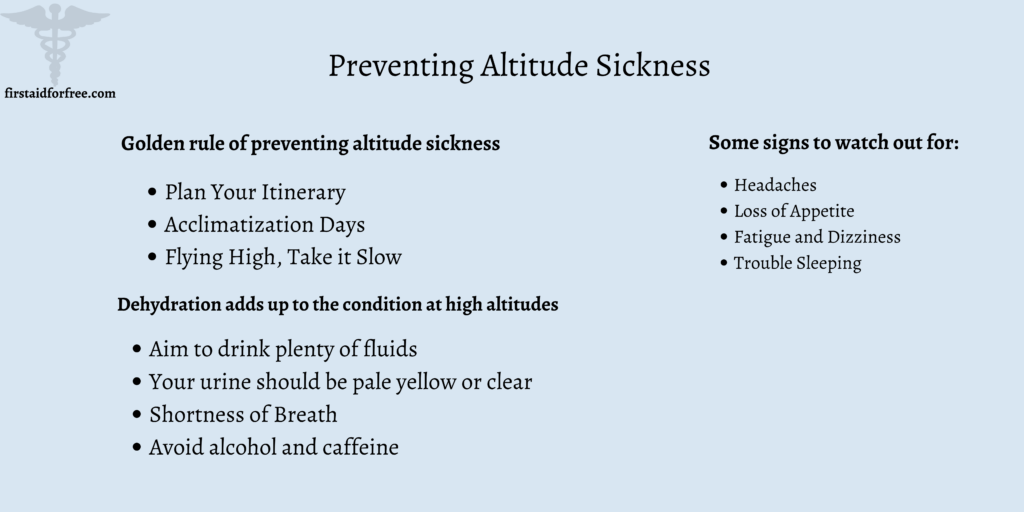
Reaching the peak of a mountain is a thrilling adventure, but altitude sickness can quickly turn it into a nightmare. Am I right?
However, by following some prevention strategies, you can significantly reduce your risk and ensure a smoother journey to the top.
The golden rule of preventing altitude sickness is a gradual ascent.
- Plan Your Itinerary: You should aim to gain 300 meters (1,000 feet) of elevation per day above 2,500 meters (8,000 feet). This allows your body time to produce more red blood cells and increase its efficiency in utilizing oxygen.
- Acclimatization Days: Make rest days for acclimatization, especially at higher altitudes. Spending an extra day at a particular elevation allows your body to catch up and adapt.
- Flying High, Take it Slow: If you’re flying directly to a high-altitude destination, consider spending a few days at a lower elevation before continuing your ascent. This gives your body a head start in adjusting to the thinner air.
Dehydration adds up to the condition at high altitudes
- Aim to drink plenty of fluids (water and electrolyte drinks) throughout the day, even if you don’t feel thirsty.
- Your urine should be pale yellow or clear. Darker-colored urine indicates dehydration.
- Avoid alcohol, caffeine, and some medications that have diuretic properties, as they can increase fluid loss.
Some people adjust faster than others. Be mindful of how your body feels and adjust your plans accordingly. Some signs to watch out for:
- Headaches: Persistent headaches are a common symptom of altitude sickness.
- Loss of Appetite: Feeling less hungry than usual can be a warning sign.
- Fatigue and Dizziness: Feeling unusually tired or lightheaded, especially at rest, can indicate altitude sickness.
- Trouble Sleeping: Difficulty getting a good night’s sleep can be a symptom.
First Aid for Altitude Sickness
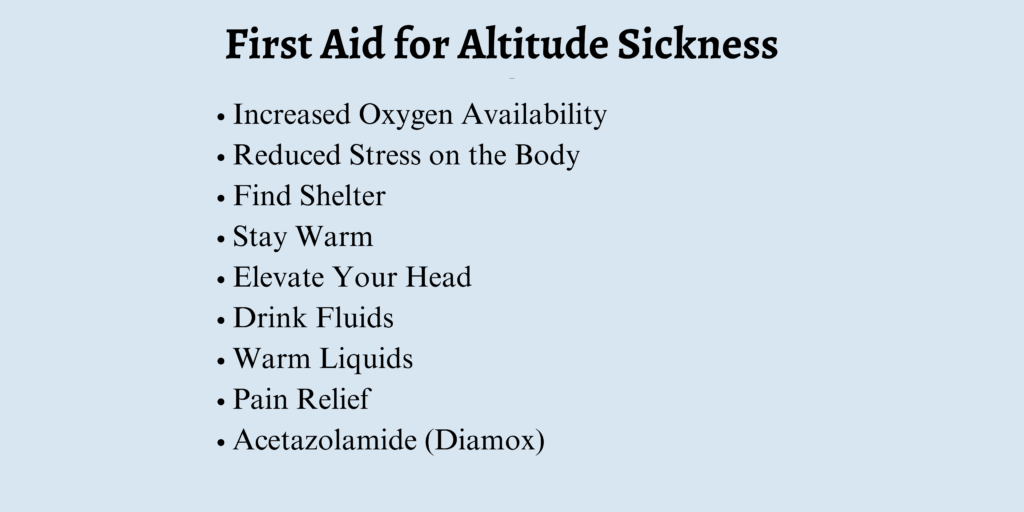
Fear not, even if symptoms arise, there are effective first-aid measures you can take to manage them and ensure a safe recovery.
The most critical action for severe altitude sickness is immediate descent. This means getting yourself or the affected person down to a lower altitude as quickly and safely as possible. Because of:
- Increased Oxygen Availability: If you descend to a lower elevation, there will be an increase in the amount of oxygen in the air, allowing your body to function more efficiently and recover.
- Reduced Stress on the Body: At a lower altitude, the strain on your heart, lungs, and brain lessens, promoting healing and preventing further complications.
For mild altitude sickness, descending might not be necessary. However, prioritizing rest and allowing your body to recover is crucial. Here’s what to do: - Find Shelter: Get out of the cold and wind and find a comfortable place to rest
- Stay Warm: Shivering increases your body’s oxygen demand, so staying warm with extra layers is essential.
- Elevate Your Head: This can help ease headaches and improve breathing.
As mentioned above, dehydration worsens altitude sickness symptoms. - Drink Fluids: Even if you don’t feel thirsty, sip on water and electrolyte drinks regularly. Aim for small amounts frequently throughout the day.
- Warm Liquids: Opt for warm liquids like broth or tea. They can be more soothing and aid in fluid absorption.
While descent and rest are the cornerstones of treatment, certain medications can help manage specific symptoms: - Pain Relief: Over-the-counter pain relievers like ibuprofen or acetaminophen can help alleviate headaches and muscle aches.
- Acetazolamide (Diamox): This prescription medication can help with acclimatization by promoting the production of bicarbonate. However, it’s crucial to consult a doctor before using it.
In severe cases, portable oxygen concentrators can provide supplemental oxygen, offering immediate relief. However, these require proper training for safe use and are not always readily available on all climbs.
When to Seek Medical Help
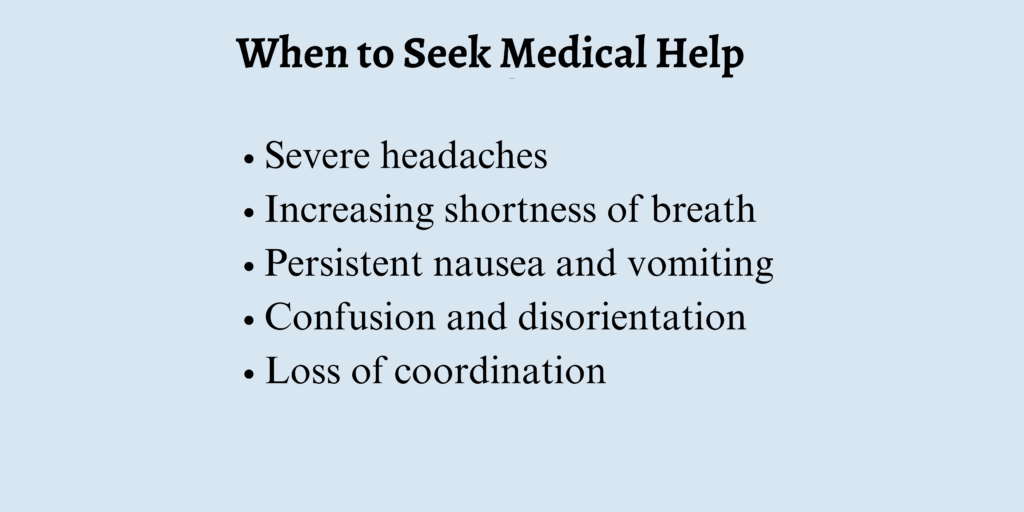
Altitude sickness can range from a mild inconvenience to a life-threatening emergency. Knowing when to seek medical help is crucial for a safe and successful high-altitude adventure.
Listen closely to your body. If your symptoms worsen despite rest and descent, don’t hesitate to seek medical help. This includes:
Severe headaches: Headaches that become progressively worse or don’t respond to medication are a cause for concern.
Increasing shortness of breath: Difficulty breathing, especially at rest, is a serious symptom and requires immediate medical evaluation.
Persistent nausea and vomiting: If vomiting persists for several hours and prevents you from drinking fluids, medical intervention is necessary.
Confusion and disorientation: Any sign of confusion, altered mental state, or hallucinations is a red flag and requires immediate medical attention.
Loss of coordination: Difficulty walking or maintaining balance is a serious symptom that indicates potential HACE (High-Altitude Cerebral Edema) and needs immediate medical attention.
If you have any pre-existing medical conditions, especially respiratory or heart problems, consult a doctor before traveling to high altitudes.
It’s always better to seek medical help early on than to ignore worsening symptoms and risk serious complications. Most mountain rescue teams and lodges have personnel trained in altitude medicine. Don’t hesitate to activate emergency protocols if necessary.
FAQs
What is altitude sickness?
It’s when your body struggles to adjust to thin air at high altitudes. You might get headaches, nausea, and feel out of breath.
How can I avoid altitude sickness?
Go up slowly! Take rest days and ascend gradually to let your body adjust. Stay hydrated and ditch the alcohol and caffeine.
When should I see a doctor for altitude sickness?
If your symptoms get worse, you have trouble breathing or get confused, descend and seek medical help immediately.
Conclusion
We hope this article was helpful and that you understood altitude sickness, its first aid, and prevention techniques.
Seek immediate medical help if you face severe discomfort while climbing.

